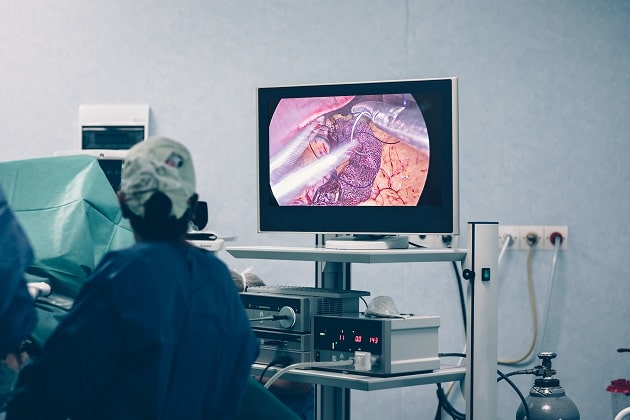
August 10, 2020
Endoscopic sleeve gastroplasty is a minimally invasive weight-loss procedure in which a suturing device is inserted through the patient’s throat down to the stomach to make it smaller. Endoscopic sleeve gastroplasty leads to significant weight loss by limiting how much the patient can eat. Like other weight-loss procedures, ESG can yield successful and long-term results only if the patient follows a healthier lifestyle and makes permanent changes to their diet. In this blog post, we answer some commonly asked questions about ESG. Read on!
1. Why is ESG done?
ESG is performed to help people lose weight and lower the risk of serious weight-related health conditions like Heart disease and stroke, Sleep Apnea, High blood pressure, fatty liver, and Osteoarthritis (joint pain). Endoscopic sleeve gastroplasty is typically done only after the patient has tried to lose weight by improving their diet and exercise habits.
2. Who is Eligible for ESG?
Endoscopic sleeve gastroplasty can be done on people whose body mass index (BMI) is above 30 and haven’t been successful in maintaining weight loss with medicines and lifestyle modifications. ESG isn’t for everyone who is obese. First, weight loss doctors, through a screening process, check if it’s beneficial for the patient. People with large hiatal hernia, gastritis, or peptic ulcer disease are not eligible for this surgery. Also, people undergoing the procedure should be willing to commit to healthy lifestyle changes and regular medical follow-up.
3. What are the Risks?
Generally, ESG is safe but some patients may experience pain and nausea for several days after the procedure. These symptoms are usually managed with medications and can fade in a few days. When combined with lifestyle modification, ESG results in about 15 to 20 percent total body weight loss at 12 to 24 months.
4. What Preparations are Required?
Patients undergoing ESG will be required to have various lab tests and exams before surgery. They may also have restrictions on eating, drinking, and certain medications. Sometimes doctors also ask patients to start a physical activity program. It is recommended to plan for the recovery after the procedure. For instance, arranging for someone else to help out at home for a few days as they recover.
5. What Should Patients Expect?
ESG is done in the endoscopy unit where doctors use general anesthesia to sedate patients. The entire procedure takes about 60 to 90 minutes after which patients are taken to a recovery room where they are monitored for any complications. After recovering from sedation, patients are generally not allowed to eat for a few hours. Later, they’ll be asked to start a liquid diet, which they need to continue for at least two weeks. Eventually, they’ll move on to semi-solid foods, and then to a regular healthy diet.
Wrap Up!
ESG is effective for most patients, although in some cases, it’s possible for patients to not lose weight as expected. Such situations generally occur when patients don’t follow a prescribed diet and exercise regimen and avoid follow-ups. When looking to undergo weight loss surgery, get in touch with the Minimally Invasive Surgical Associated in Dallas to discuss your options with a seasoned weight loss doctor, and get answers to all your questions. Call 469-620-0222 or reach us at [email protected].
